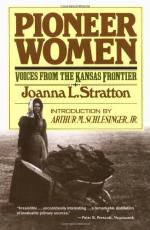|
This section contains 435 words (approx. 2 pages at 400 words per page) |

|
Chapter 3 Summary and Analysis
Though in the nineteenth century a woman's place was considered the home, and she was expected to be subservient to her husband, the rigors and freedom of the prairie oftentimes changed this dynamic, with the husband and wife on equal footing as heads of the family. This was due in part to the chronic shortage of labor in the plains, to the point where women took up traditionally male tasks like planting, tending livestock, and even hunting.
After establishing their homestead, a family next set about to work the land. A patch of ideal farmland was cleared, a fairly easy process in a prairie usually devoid of trees and large rocks. Plowing was more difficult, given the tough soil, and a large plow known as a breaking plow was used to turn the earth. It usually took several yoke of oxen...
(read more from the Chapter 3 Summary)
|
This section contains 435 words (approx. 2 pages at 400 words per page) |

|




